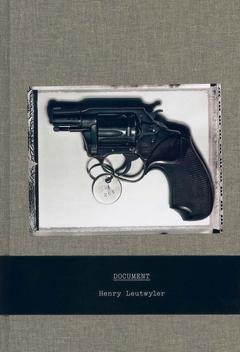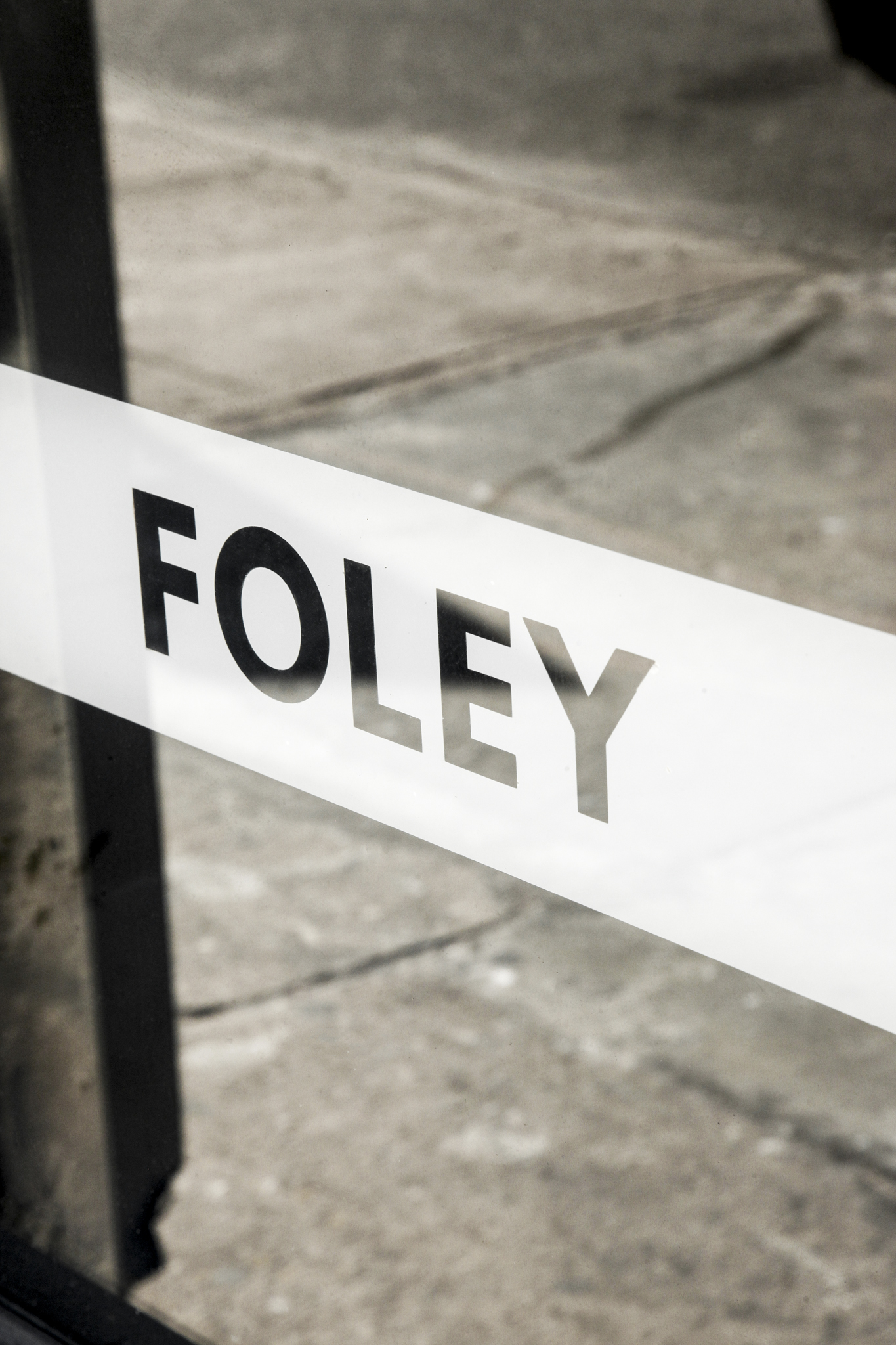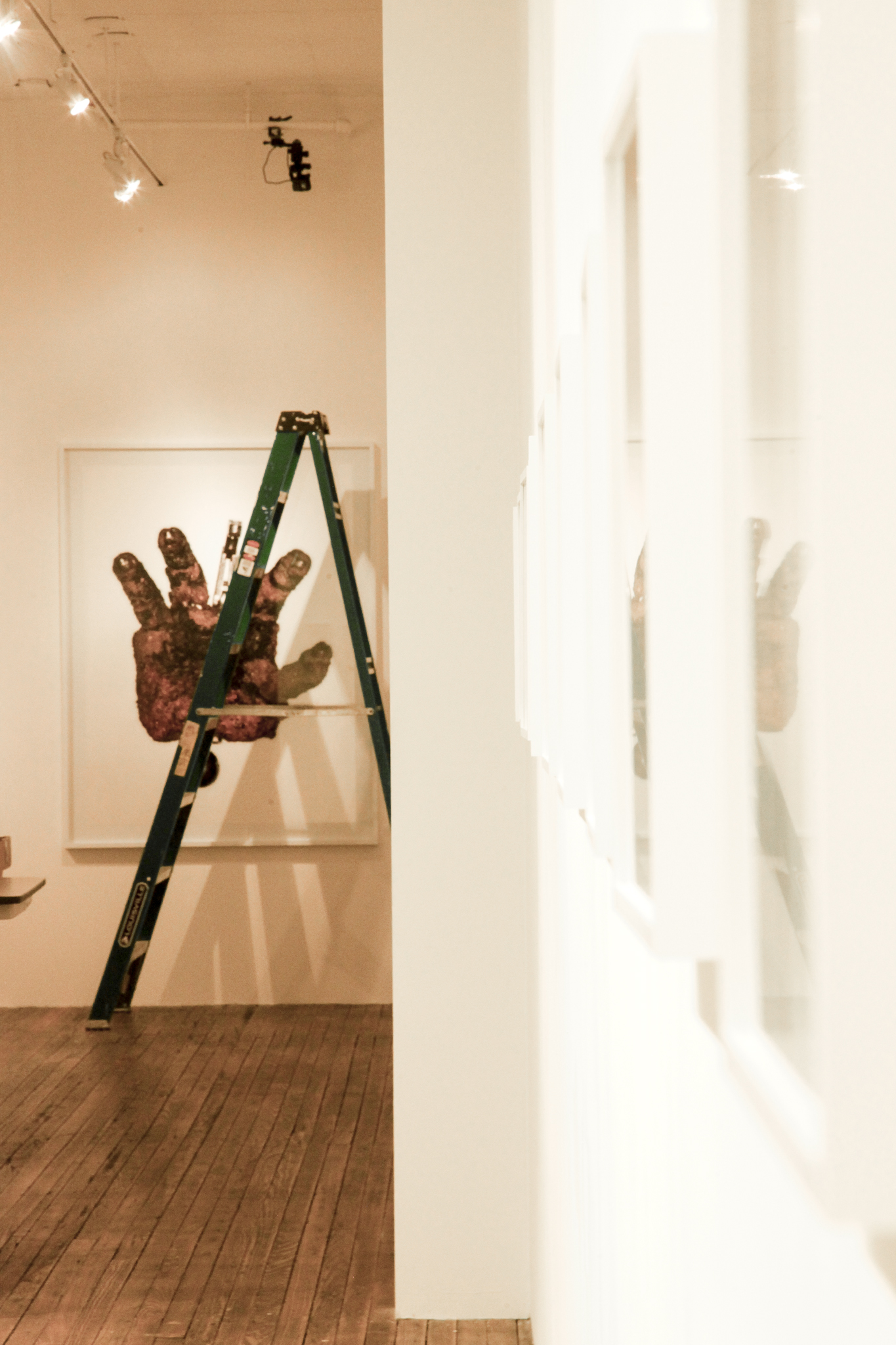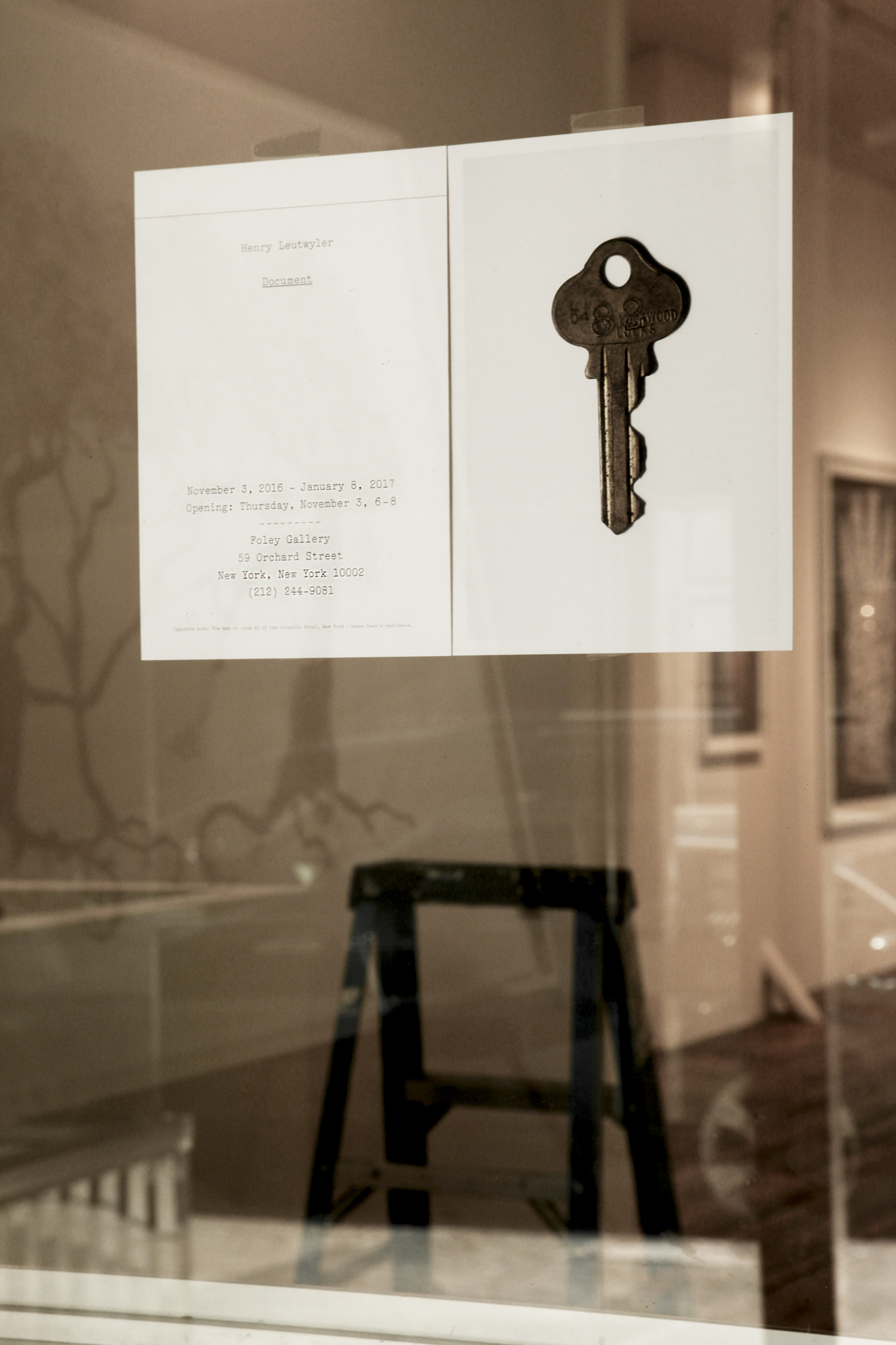Document Book Cover: The .38 caliber revolver used to assassinate John Lennon. (Photograph by Henry Leutwyler)
When I think of my favorite genres in photography: portraiture, still life, crime-scene - I never imagined it could be all be done by one single photographer. That's until I discovered Henry Leutwyler. He is best known for his celebrity portraits and his work have been published in the likes of Vanity Fair, National Geographic, and Vogue. In his new book, Document Henry encompasses a vast range of objects from iconic moments owned by fascinating people throughout history, pop culture, the arts and sports. These fields include his very own heroes (and villains because "not everything in life is cute"), as Henry carefully archives the good, the bad, and the even the ugly, or rather tragic.
Such as the captivating cover of Document, which displays the .38 caliber revolver that killed John Lennon, each photograph offers a humanizing chronicle of society: Where we've been and where we're going.
Audrey Hepburn's Valentine portable typewriter. (Photograph by Henry Leutwyler)
The objects are completely separated from their contexts and owners (excerpts are cleverly hidden in the back of the book) and what remains and what's been left behind, are traces both in a historical artifact-like nature and one where dreams are made of. A masterfully crafted book of an unconventional collection of 124 images such as Mahatma Ghandi's sandal, Julia Child's madeleine baking tray, Jimi Hendrix's red Fender, Gene Kelly's beaten up Converses, the mechanical prop hand from the original 1933 King Kong movie, and more, it has taken over a decade to complete.
So when I had the pleasure to sit down and talk with Leutwyler, I had lots of questions. The biggest question? What 'pulled the trigger' to get going on such a demanding (and expensive) series. The initial idea of conveying stories through people's possessions in Document really came together after working on two specific but isolated projects. It first started when Leutwyler was commissioned by the Elvis Presley Estate roughly ten years ago where he spent nearly a month photographing Elvis’ personal effects, including his comb, eyeglasses, prescription bottles, toy cars and gold-plated microphone. Even down to Lisa Marie's birth certificate.
He then went on to do an assignment for Mother Jones on gun control. Leutwyler by chance came across the .38 caliber revolver used to assassinate John Lennon. While he ended up taking a photograph of that gun, the start of something bigger began to brew. And this is what helped jumpstart Document.
John Lennon's blue-tinted sunglasses. (Photograph by Henry Leutwyler)
Andy Warhol's paintbrush. (Photograph by Henry Leutwyler)
"Photography is not open heart surgery on newborns. We don't save lives. While I believe we're not performing heart surgery, I do believe photographs have the power to change the world." -Henry Leutwyler
This is precisely answered my next question – what's the 'big picture'? The consistency of the book is rather subtle but profound. Leutwyler's minimal style strongly express the right to think and feel. Nothing is instant. When you look at the photographed objects you want to stare for a while, you want to touch them; smell them; perhaps even reminisce in with feelings of nostalgia, melancholy, triumph, rage, sadness, joy. All very raw human emotions. But what underlies in Document is not its sheer beauty of mementos/sentiments and the way it can be carried through your own memories, but the power it has to compel you to learn something.
And to make an impact on the world, Leutwyler decided to use the first photograph that started it all, the photograph of the gun that assassinated John Lennon and donate all proceeds of the sale of the print to Everytown, a movement of Americans working together to end gun violence and build safer communities. Something's gotta give and Leutwyler is doing just that.
Of course, I had to mention a few of my own favorite heroes, and yes, perhaps villains. My father would have loved to see Muhammad Ali's glove. In fact, he met him once in person at a hotel in Indiana. We both loved watching boxing films together, a tradition going all the way back to the original 1979 film, The Champ. I still cry to this day watching that movie. And I'm still madly in love with the art of boxing. See how much can be grabbed from a single image? And all precisely from an object of the rich & famous.
Other favorable mentions: Bob Marley's hat and guitar, along with Bob Dylan's harmonica, Jimi Hendrix's red Fender, and Michael Jackson's glove. Some of my all-time favorite musicians, they all had something special and I think that's what, maybe partially, set their destinies and certainly helped change the world as well. I am still mesmerized by their music to this day and that, at least to me, is significant. Even just looking at the objects, I can hear the tunes and feel the beat in my heart. It makes me want to dance and shout all at once. But only if I can jump into James Gandolfini's Cadillac while doing so (and yeah, tagging along a few of Avedon's 'tools' for a shoot of my own.)
James Gandolfini's Cadillac. (Photograph by Henry Leutwyler)
Richard Avedon's studio A-clamp. (Photograph by Henry Leutwyler)
Portrait by © Suzanne Spiegoski
FUN FACTS
FIRST LOVE: STILL LIFE
BIGGEST FEAR: DEATH
BIGGEST PET PEEVE: I DESPISE ENTITLEMENT & ENTITLED PEOPLE.
GREATEST ACCOMPLISHMENT: BEING ABLE TO MAKE PEOPLE LAUGH.
GREATEST REGRET: CAN NEVER BUY BACK TIME.
IF YOU COULD CHANGE ONE THING ABOUT YOURSELF, WHAT WOULD IT BE?: NOTHING.
FAVORITE PHOTOGRAPHER: MR. PENN. UNRIVALED TO THIS DAY.
FAVORITE FOOD: JAPANESE
FAVORITE PLACE IN NYC: THE NOGUCHI MUSEUM
FAVORITE PLACE IN THE WORLD: VENICE, ITALY
Leutwyler will be exhibiting photographs from Document at the Foley Gallery in New York City beginning November 3. I'll be attending the opening reception, so stay tuned for a recap of the event through my Insta Stories & SnapChat!





































